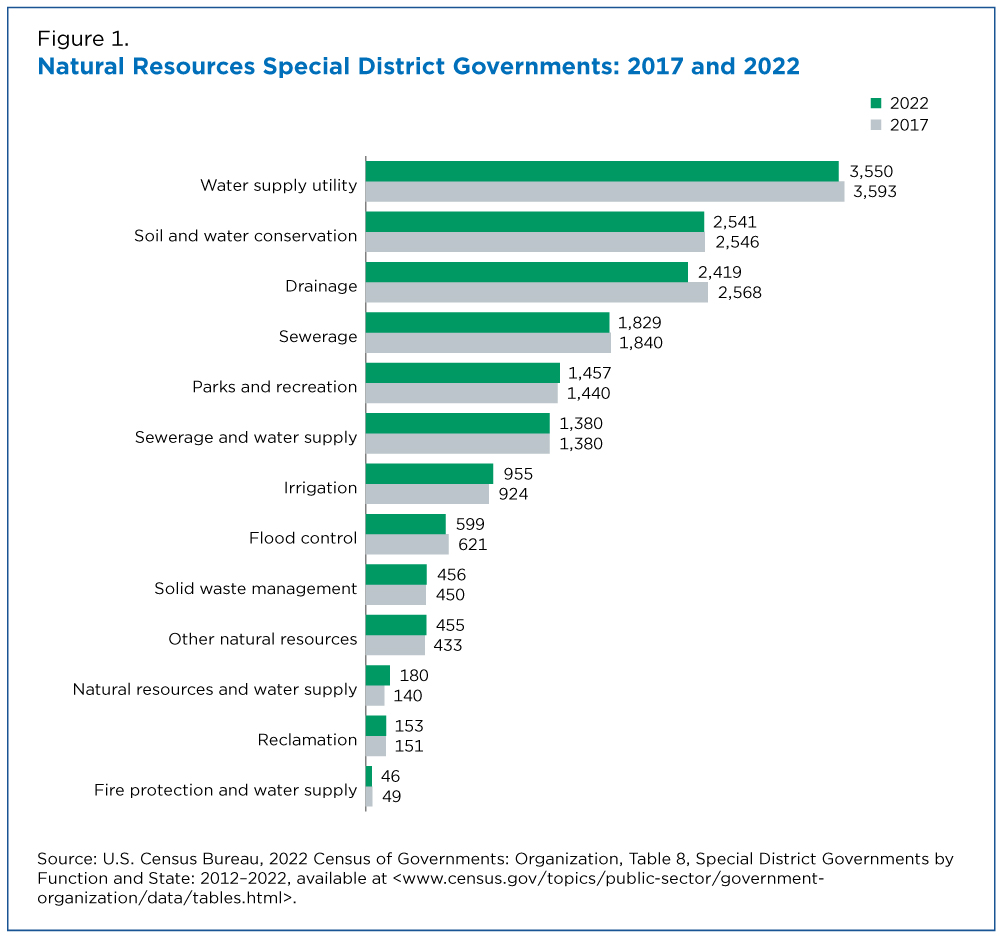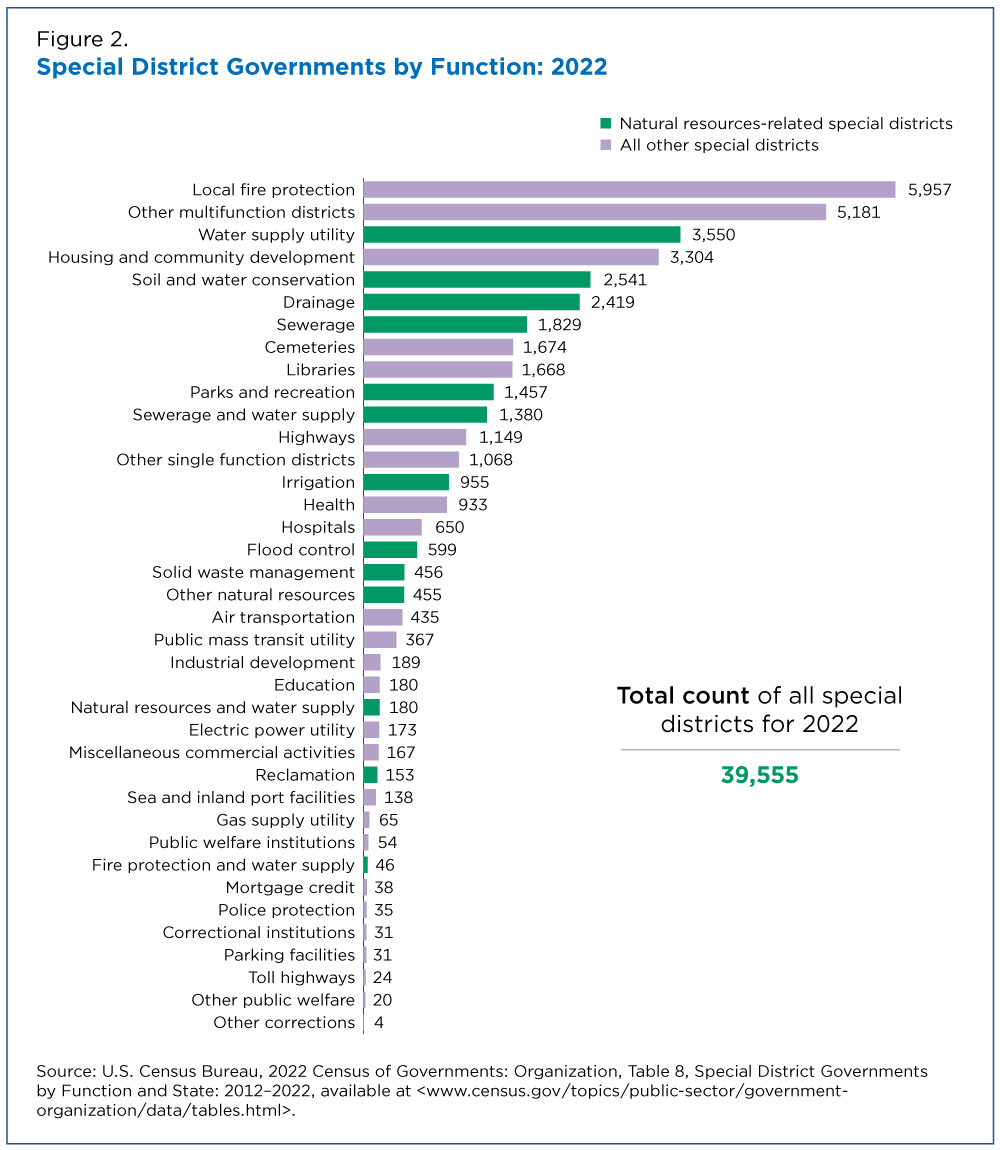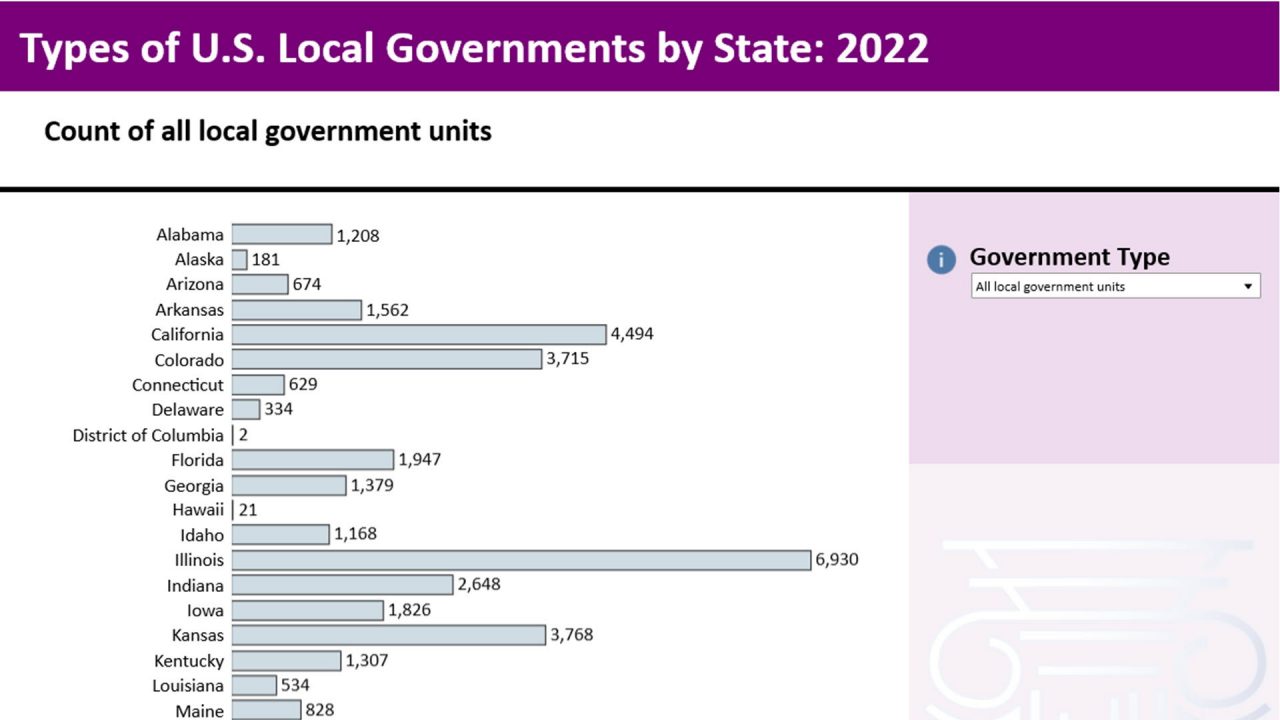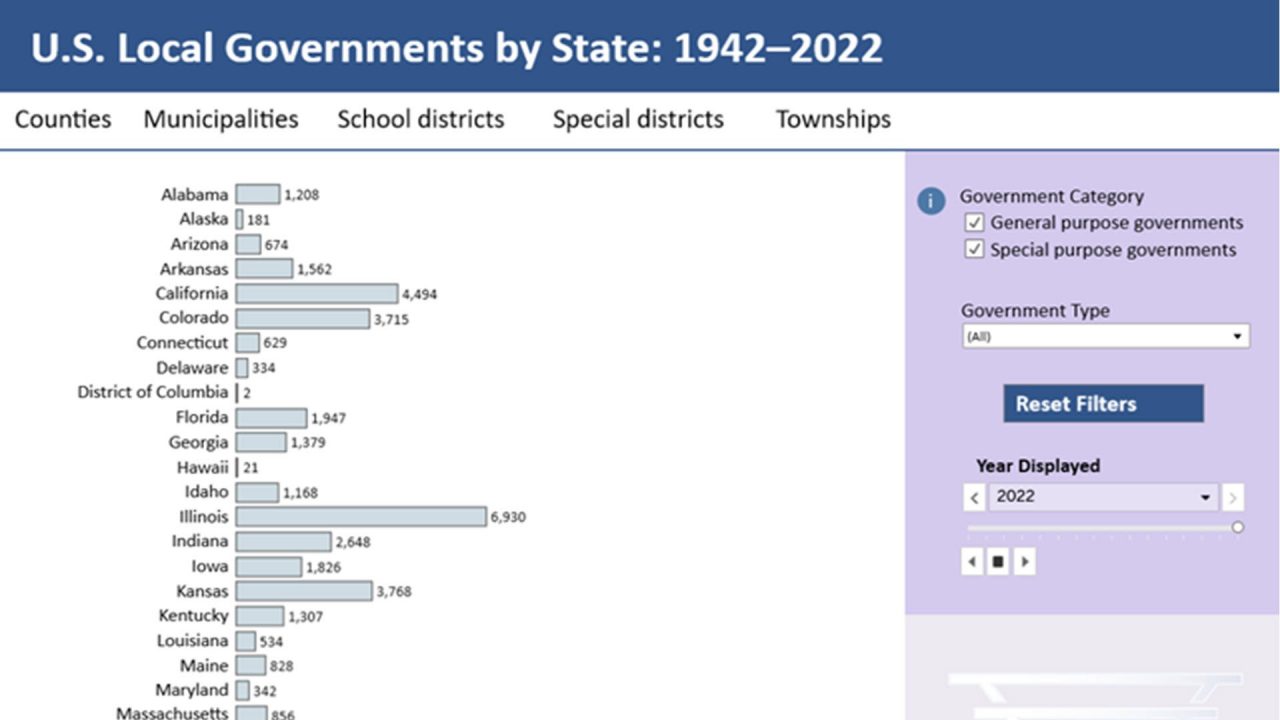Special District Governments Manage Natural Resources in Many U.S. Communities
Do you ever wonder how daily resources — lights at the flick of a switch, flowing water at the turn of a tap or irrigation to grow fresh produce — arrive in our homes and stores?
Chances are you live in an area where the natural resources you use are provided by a special district government that manages one or more of these vital services.
The U.S. Census Bureau today released the 2022 Census of Governments — Organization, a compilation of the total count and types of all local governments, including special districts, in the 50 states and the District of Columbia.
Special district governments operate independently from your local county or municipality. They have the legal power to collect their own tax revenues necessary to provide services that benefit our communities, such as irrigation, water treatment, and soil and water conservation.
The Census Bureau classifies local governments [PDF 11.9 MB] (primarily funded by taxpayer dollars) as either general purpose (counties, municipalities, and townships) or special purpose (independent school districts and special district governments).
Special district governments operate independently from your local county or municipality. They have the legal power to collect their own tax revenues necessary to provide services that benefit our communities, such as irrigation, water treatment, and soil and water conservation.
What Are Natural Resources Special Districts?
While special districts cover a wide range of services for the public sector, let’s explore those like water supply and flood control that conserve, promote and develop natural resources.
How Many Natural Resources Special Districts Were There in 2022?
The 2022 Census of Governments – Organization publication shows that 16,020 or 41% of the nation’s 39,555 special district governments in 2022 supported parts of the economy related to natural resources.
In comparison, there were fewer (38,542) special district governments in 2017 but slightly more (16,145) devoted to natural resources.
In general, the number of natural resources special districts remained relatively consistent over the five-year period.
Everyone can appreciate that irrigation and proper water management are critical functions for stable agriculture. The Census of Governments captures several types of these special districts that you may not be aware of, some unique to a geographic region.
- Acequias (ah-SAY-kee-Yuhs):
In the U.S. Southwest, specifically in southern Colorado and parts of New Mexico, acequias are vital to communities’ water operations.
Acequias are special district governments that are community-operated irrigation canals which provide water for domestic and industrial use. Each community that borders an acequia is entitled to use the water and commits to provide the regular maintenance and repairs. An acequia commission (led by a superintendent or mayordomo) oversees the acequia’s operations of the acequia and distribution of the water.
The hydrology of acequias benefits ecological health and farming production and maintains groundwater levels. They are the oldest water management system in the United States. The Census Bureau typically classifies these as drainage or irrigation districts.
- Tax Ditch Districts:
Prevalent on the East Coast, particularly in Delaware and Maryland, tax ditch districts are another type of natural resources special district that oversee drainage of agricultural lands and water management for resource conservation purposes.
The Census of Governments counts over 200 tax ditch districts in Delaware, ranging in size from a small two-acre system in Wilmington to 56,000 acres in west central Delaware. These districts manage over 2,000 miles of water channels and provide benefits to over 100,000 people, according to the Delaware Department of Natural Resources and Environmental Control.
More Information
Government Organization tables provide information about the number of active local governments by type, function, and by state. The data published in August 2023 includes 11 tables of data on local government counts from the 2022 Census of Governments.
Coming in Spring 2024, the Census Bureau will release detailed descriptions of the responsibilities and authorities of local governments in each state and the District of Columbia in the 2022 Individual State Descriptions report.
Note: Select the image to go to the interactive data visualization.
Note: Select the image to go to the interactive data visualization.
Related Statistics
-
Census of Governments (CoG)Identifies the scope and nature of the nation's state and local government sector including public finance and public employment and classifications.
-
Stats for StoriesPublic Service Recognition Week: May 7-13, 2023The 2021 Annual Survey of Public Employment & Payroll counted 14.9M full-time and 4.0M part-time employees working in state and local government in the U.S.
-
Stats for StoriesNational Tax Day: April 18, 2023*Q4 2022 combined state and local tax revenues for property, sales and gross receipts, and income taxes increased 2.4% to $502.7B from $490.9B in Q4 2021.
Subscribe
Our email newsletter is sent out on the day we publish a story. Get an alert directly in your inbox to read, share and blog about our newest stories.
Contact our Public Information Office for media inquiries or interviews.
-
PopulationAre There Special Districts in Your Hometown?October 29, 2019The U.S. Census Bureau this year released the 2017 Census of Governments-Organization component, an official tally of every type of local government in the U.S.
-
HealthHow Did CARES Act Funding Impact State Revenues, Spending?July 11, 2022The 2020 Annual Survey of State Government Finances captures only three months of the CARES Act funding to state governments but it already shows major impacts.
-
Population2020 Census Count Guides Funding of New Roads and BridgesDecember 04, 2019Billions of dollars in federal funds are spent annually on critical transportation services. The 2020 Census may help decide...
-
EmploymentThe Stories Behind Census Numbers in 2025December 22, 2025A year-end review of America Counts stories on everything from families and housing to business and income.
-
Families and Living ArrangementsMore First-Time Moms Live With an Unmarried PartnerDecember 16, 2025About a quarter of all first-time mothers were cohabiting at the time of childbirth in the early 2020s. College-educated moms were more likely to be married.
-
Business and EconomyState Governments Parlay Sports Betting Into Tax WindfallDecember 10, 2025Total state-level sports betting tax revenues has increased 382% since the third quarter of 2021, when data collection began.
-
EmploymentU.S. Workforce is Aging, Especially in Some FirmsDecember 02, 2025Firms in sectors like utilities and manufacturing and states like Maine are more likely to have a high share of workers over age 55.








